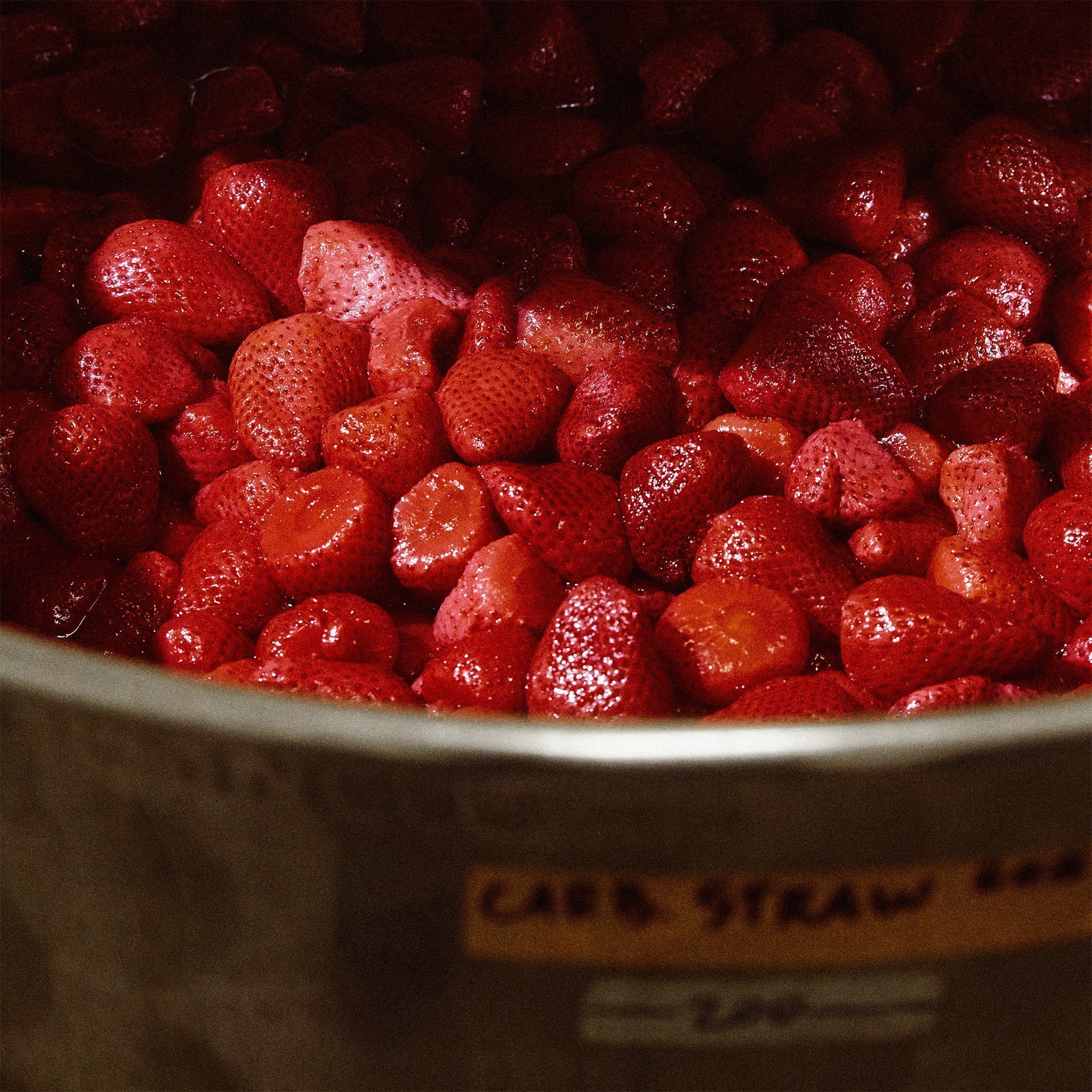
From Fruit to Ferment: How We Use Carbonic Maceration in Uzume
At MURI, flavour is everything.
It’s what guides every decision — from the way we ferment, to the ingredients we choose, to the techniques we adapt from various disciplines.
Our backgrounds in kitchens, distilleries, cocktail bars, and cider houses — allow us to use unique techniques into every blend we make. We’re constantly experimenting, borrowing processes from other disciplines and adapting them to suit our own flavour goals.
One of those borrowed techniques? Carbonic maceration — traditionally used in natural winemaking, but something we’ve reimagined for one of our most refined drinks to date: Uzume, our collaboration with 12-Michelin-star chef Anne-Sophie Pic.
To put it simply, carbonic maceration involves sealing fresh fruit (in this case, strawberries 🍓) inside a CO₂-rich tank. There’s no oxygen, no added yeast — just time and pressure. In that anaerobic environment, something special happens: the berries begin to ferment from the inside out. The result is fruit that’s intensely jammy, floral, and aromatic, with none of the cooked or stewed character you’d get from more aggressive processes.
This is just one of three fermentation techniques we used on the strawberries in Uzume. Each layer adds something different — acidity, texture, brightness, depth — all carefully balanced to create a blend that evolves as you drink it.
Because for us, it’s not just about ingredients.
It’s about what you do with them.
Uzume is back in stock, try strawberries fermented three ways now!